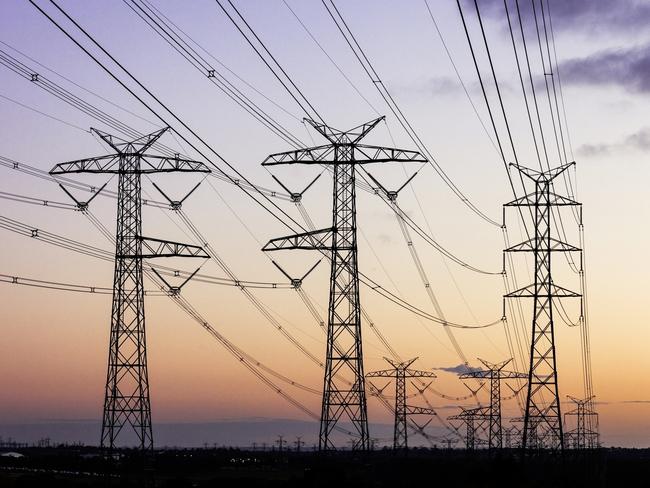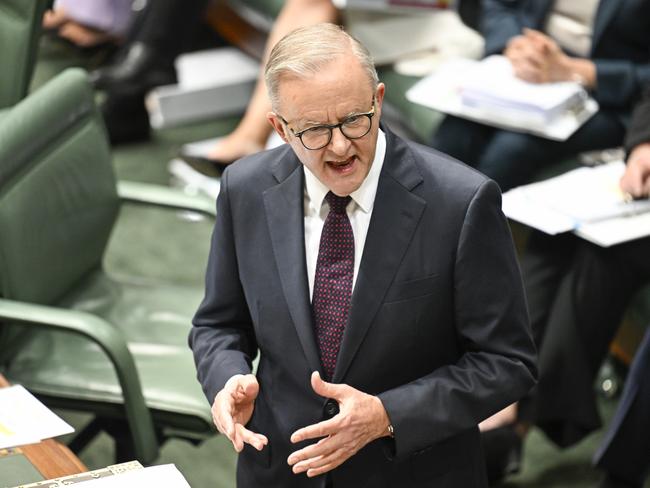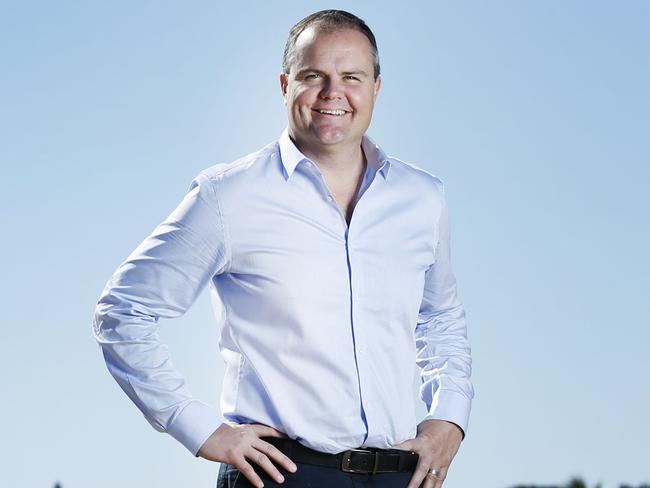Moody’s warns Aussies face higher power bills to pay for net zero target
Aussie households have been warned to brace for ongoing power bill increases over the next decade. See why and how it’ll affect you.
National
Don't miss out on the headlines from National. Followed categories will be added to My News.
Exclusive
Electricity prices are likely to rise by 45 to 65 per cent over the next 10 years to pay for the transition to net zero emissions, a global credit rating agency has warned.
In a new in-depth report, Moody’s also estimates that the pace of the renewables rollout would need to double to meet government targets.
The firm said that over the coming decade, decarbonising the power grid will increase consumer energy costs by 15 to 35 per cent – on top of the 30 per cent impact of general inflation over that time frame.
“Australia requires huge investment over the next ten years as it pursues net zero by 2050,” Moody’s analysts wrote.
“Energy prices are the means by which those companies are compensated for that investment. Given the projected scale of investment to make the transition, energy prices have to intuitively rise.”
A 65 per cent increase over a decade equates to annual rises of more than five per cent a year, once the effect of compounding is included.

While this is not outrageous, it adds more pain for households and businesses that have already endured big jumps in their costs – only offset in recent times by taxpayer-funded subsidies.
The prediction of further increases is also a political problem for the Albanese government because it has positioned renewables as the best option for keeping prices under control.
Labor went so far as to vow that its plans would reduce bills. However, the opposite has happened.
The Moody’s report, which aims to provide a guide on the outlook for corporate and government credit quality, forecasts that the National Electricity Market will need $150 to $230bn of fresh funding through to 2035.
“Transition investment must be paid for,” the firm said.
“Without adequate returns on that investment, power companies will not be incentivised to undertake it.
“Even publicly owned companies must generate returns on investment to remain financially sustainable.”
“Power prices will likely rise to pay for this investment,” Moody’s said.

Moody’s said the immense scale of the transition will make achieving the decarbonisation goals “challenging”.
“There is a risk of slippages given that the run-rate on the renewable energy rollout will need to effectively double on recent years to reach national targets,” it said.
“The scale of the transition partly reflects that renewable electricity generation output is guided by the vagaries of the weather and is often located in remote renewable resource rich regions,” meaning extra transmission infrastructure has to be built.
Moody’s warned of “social risks” if customers are asked to foot higher energy bills.
To keep public sentiment in check, there may be more government rebates, the firm predicted.
In the past two budgets, the Albanese government has spent several billion dollars of taxpayers’ money on subsidies.
Labor went to the last election promising to lower power bills by $275 by 2025. Instead, most customers’ costs have risen by far more.
“We consider the power sector to exhibit high social risks on account of rising electricity prices,” Moody’s said.
“Social risks may also be concentrated in regions carrying more of the transition burden,” in the form of transmission lines, wind turbines and solar farms.
Moody’s said Canberra had the financial capacity to provide more bill offsets, but the government was already “facing significant spending pressures including in policy areas such as the National Disability Insurance Scheme, defence spending and (other) responses to climate change.”

Shadow Energy Minister Ted O’Brien said the Moody’s report showed “Labor’s reckless energy plan is a blank cheque for higher power bills.
“This is yet another independent warning that (Energy Minister) Chris Bowen’s renewables-only approach will hurt Australians, forcing families and businesses to the wall,” Mr O’Brien said.
Mr Bowen said the Moody’s report showed that Opposition Leader Peter Dutton’s nuclear “plan will cost Australians more on their electricity bills”.
Mr Bowen pointed to a section of the Moody’s report that said “increased government intervention in the power market risks clouding the merits of private investment and potentially undermining climate targets.
“This is because private developers have to factor in the potential of further intervention that may undermine the investment merits of their own undertakings.”
The Coalition wants to publicly fund several nuclear reactors across mainland Australia. The policy has been costed at about $330bn, but Labor says the actual figure will be far higher.
More Coverage
Originally published as Moody’s warns Aussies face higher power bills to pay for net zero target





